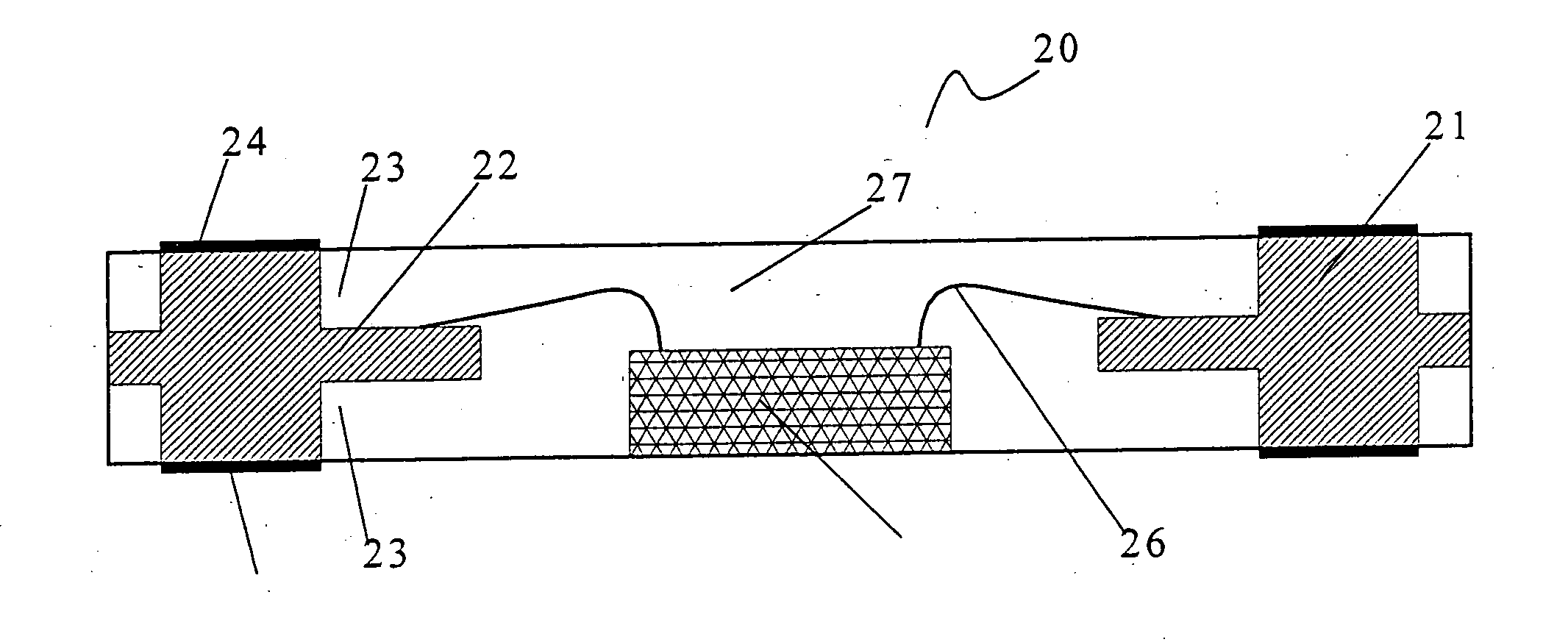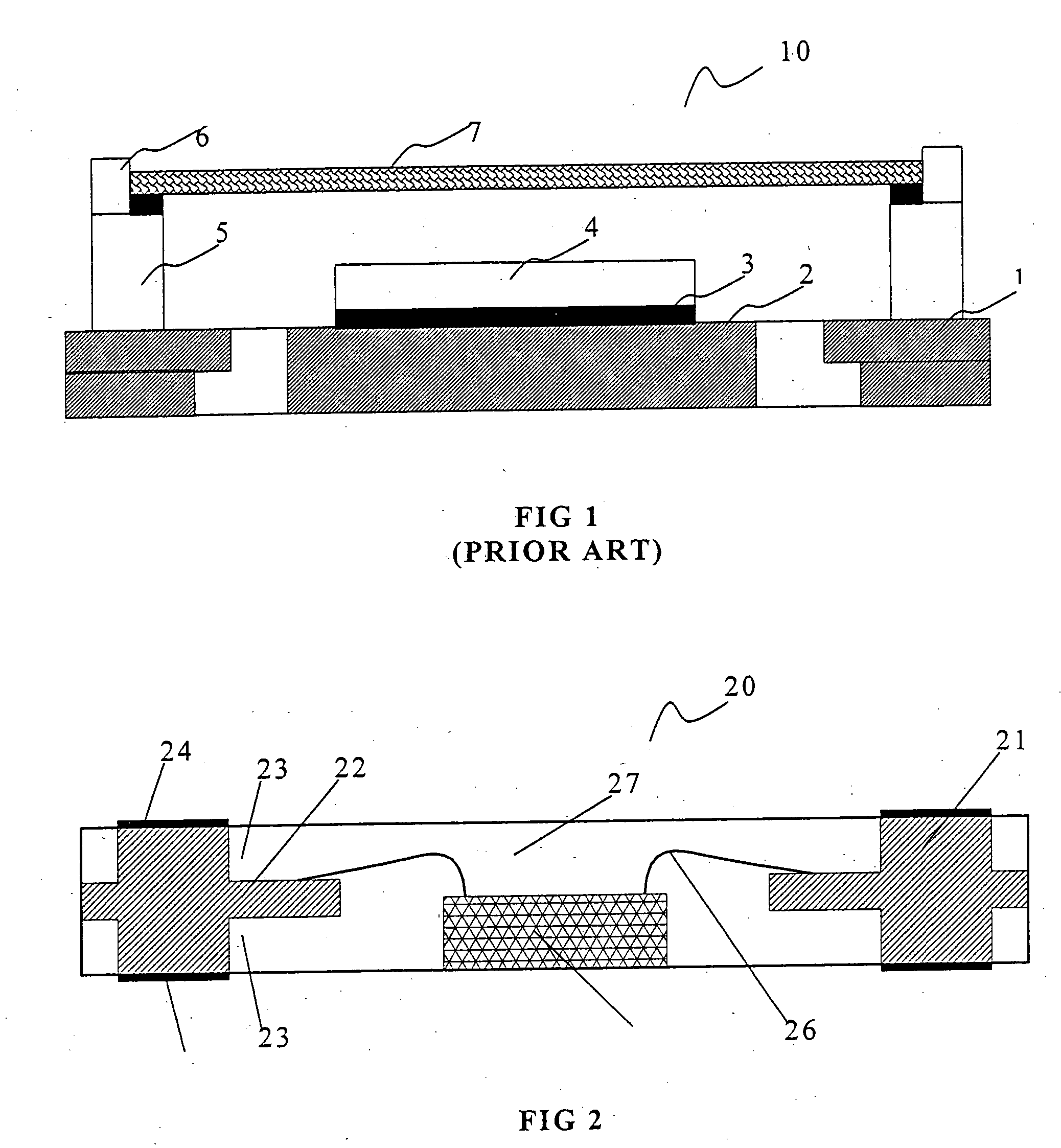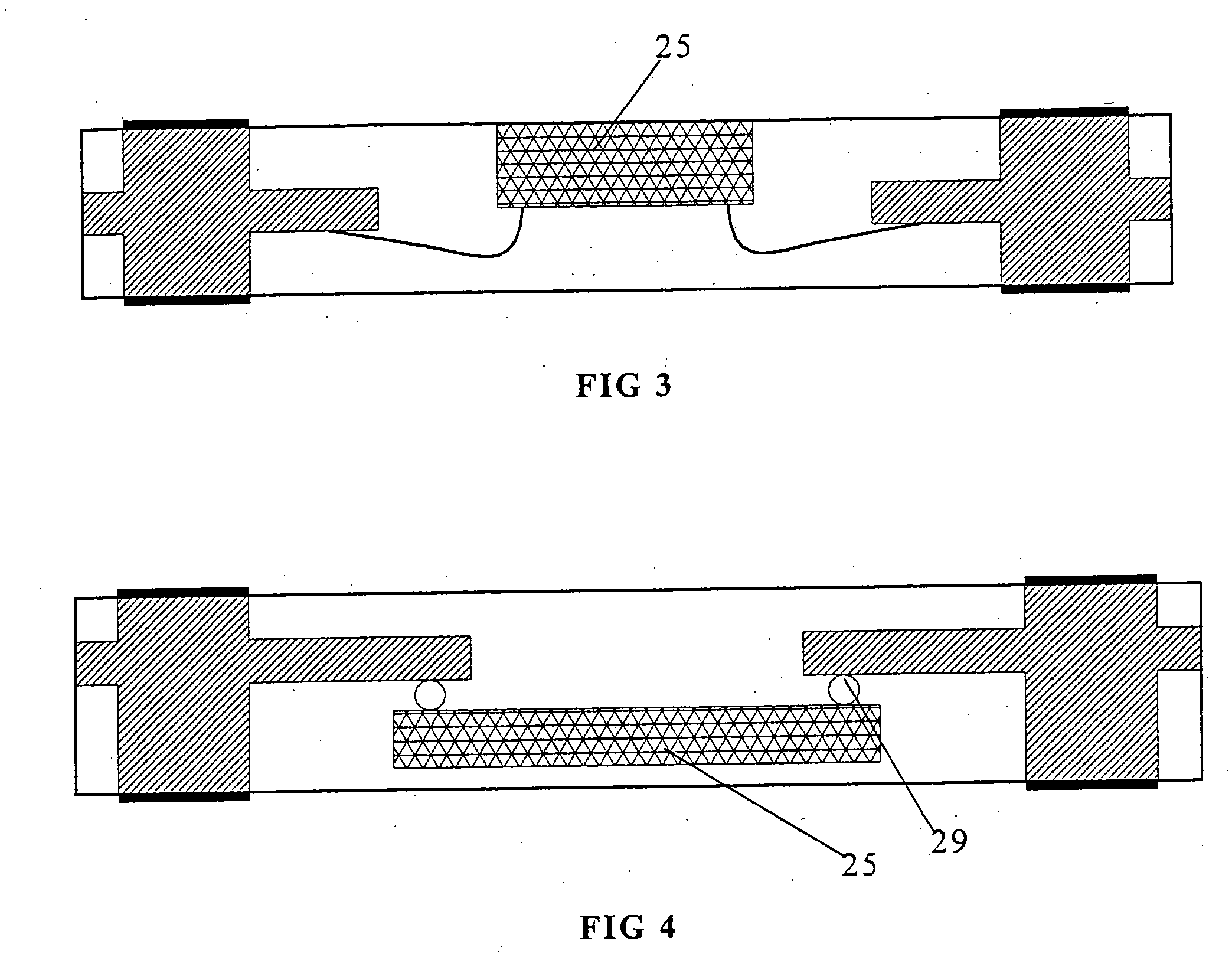Ultra-thin quad flat no-lead (QFN) package
a flat no-lead, ultra-thin technology, applied in the direction of basic electric elements, solid-state devices, electric devices, etc., can solve the problems of leadframe design, warpage, variation, delamination,
- Summary
- Abstract
- Description
- Claims
- Application Information
AI Technical Summary
Benefits of technology
Problems solved by technology
Method used
Image
Examples
Embodiment Construction
[0025] Throughout this application, where publications are referenced, the disclosures of these publications are hereby incorporated by reference, in their entireties, into this application in order to more fully describe the state of art to which this disclosure pertains.
[0026] The present disclosure provides an ultra-thin Quad Flat No-Lead (QFN) semiconductor chip package, an ultra-thin Optical Quad Flat No-Lead (OQFN) semiconductor chip package, and methods of manufacturing the packages. The following description will omit details of materials and process techniques that are known to those skilled in the art. The omissions is are for the sake of brevity and no obscurity of do not obscure the principles or the implementations of the present disclosure.
[0027]FIG. 2, is a simplified cross-sectional view of the QFN package according to one embodiment of the present disclosure. The QFN package 20 includes a leadframe 21, a die 25, and a molding compound 27. The leadframe 21 has a to...
PUM
 Login to View More
Login to View More Abstract
Description
Claims
Application Information
 Login to View More
Login to View More - R&D
- Intellectual Property
- Life Sciences
- Materials
- Tech Scout
- Unparalleled Data Quality
- Higher Quality Content
- 60% Fewer Hallucinations
Browse by: Latest US Patents, China's latest patents, Technical Efficacy Thesaurus, Application Domain, Technology Topic, Popular Technical Reports.
© 2025 PatSnap. All rights reserved.Legal|Privacy policy|Modern Slavery Act Transparency Statement|Sitemap|About US| Contact US: help@patsnap.com



